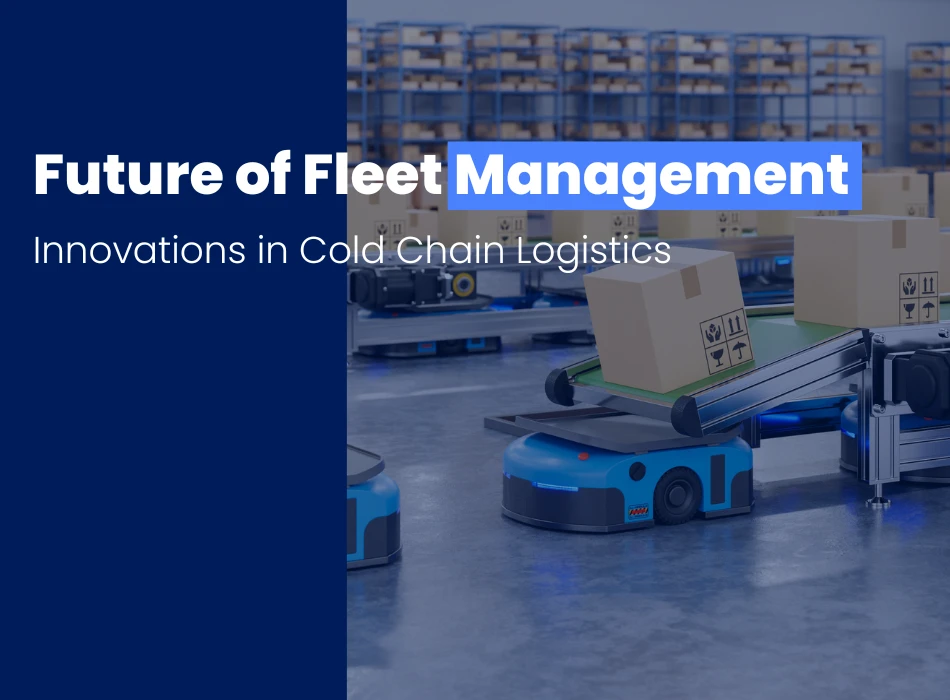The Future of Fleet Management: Innovations in Cold Chain Logistics
Explore the future of fleet management in cold chain logistics with innovative technologies enhancing efficiency and sustainability in 2024.

As the demand for temperature-sensitive products continues to rise, effective fleet management in cold chain logistics is becoming increasingly crucial. Recent estimates indicate that cold chain logistics can account for up to 30% of total logistics costs, emphasizing the need for innovative solutions. In 2024, advancements in technology are reshaping how companies manage their fleets, ensuring that perishable goods are transported efficiently and safely.
This blog will explore key innovations transforming fleet management in cold chain logistics, from real-time monitoring systems to automation and sustainability practices.
Key Innovations in Cold Chain Fleet Management
Real-Time Monitoring Systems
- IoT Integration: Internet of Things (IoT) devices enable real-time tracking of temperature-sensitive shipments, providing alerts if conditions deviate from required ranges. This technology helps prevent spoilage and ensures compliance with safety regulations.
- Data Analytics: Advanced data analytics allow fleet managers to predict potential issues before they arise, optimizing routes and improving delivery times.
Autonomous Vehicles
- Driverless Delivery: Companies are exploring the use of autonomous vehicles for transporting goods. These vehicles can maintain optimal temperatures without the need for human intervention, reducing labor costs and increasing efficiency.
- Drones for Last-Mile Delivery: Drones are being tested for last-mile deliveries of pharmaceuticals and perishables, offering rapid transport solutions that minimize temperature exposure during transit.
Advanced Refrigeration Technologies
- Smart Refrigeration Units: Innovations such as DENSO’s D-FAMS® provide real-time updates on refrigeration unit performance, ensuring that products remain within specified temperature ranges throughout the journey.
- Battery-Powered Refrigeration: New battery-backed systems ensure continuous cooling even during power outages, which is critical for maintaining product integrity.
Automation and Robotics
- Warehouse Automation: Automated storage and retrieval systems (AS/RS) are enhancing efficiency in cold storage facilities by optimizing space utilization and speeding up order fulfillment processes.
- Robotic Fleet Management: Robotics are increasingly used to manage inventory and assist with loading and unloading tasks, reducing human exposure to extreme temperatures.
Sustainable Practices
- Electric Vehicles (EVs): The shift towards electric trucks is gaining momentum as companies seek to reduce their carbon footprint while maintaining efficient operations.
- Eco-Friendly Packaging: Innovations in sustainable packaging materials help maintain temperature control while minimizing environmental impact.
Case Studies
- Tive’s Cold Chain Solutions
Tive has developed a robust platform that integrates real-time tracking devices with advanced analytics. Their solutions provide unparalleled visibility into cold chain operations, allowing businesses to monitor temperature-sensitive shipments effectively. Companies using Tive’s technology have reported a 25% reduction in spoilage rates, showcasing the effectiveness of real-time monitoring. - Vaara’s Electric Refrigeration Systems
Vaara has introduced electric refrigeration systems equipped with long-lasting batteries that provide over five hours of operation on a single charge. This innovation has streamlined logistics operations by eliminating the need for frequent recharging during deliveries, enhancing overall efficiency. - Amazon’s Robotics Integration
Amazon has implemented robotics in its cold storage facilities to automate picking and packing processes. This integration has resulted in faster order fulfillment times and improved accuracy, significantly enhancing their cold chain logistics capabilities.
Conclusion
The future of fleet management in cold chain logistics is being shaped by innovative technologies that enhance efficiency, reduce costs, and ensure product integrity. As companies adopt real-time monitoring systems, autonomous vehicles, advanced refrigeration technologies, automation, and sustainable practices, they position themselves to meet the growing demands of the market effectively. Embracing these innovations will be crucial for businesses aiming to thrive in the competitive landscape of cold chain logistics.